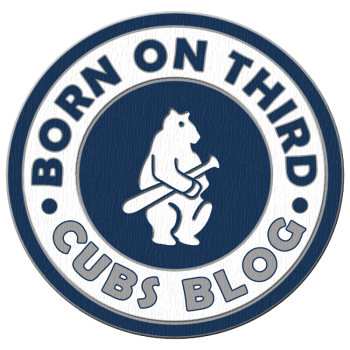Reminder: The one thing I love about twitter is meeting other Cubs fans, talking baseball, and getting to know them. There is never anything wrong with talking baseball, and I want to give fans an opportunity to share their thoughts on the Cubs here on the blog. So our first new feature will be all about stats, the advanced kind, so you know what I’m talking about if I throw some sort of weird numbers at you. Brandon has volunteered to introduce readers to some of these stats every Sunday, I hope you enjoy the feature, and give Brandon a follow on twitter to talk some baseball.
Welcome back to the second Stats Sunday (which is tentative to change). Sorry I couldn’t get one in last weekend as I was on vacation. Today we are going to talk about 3 stats that are the foundation of your understanding of batting stats. These 3 are the Adam and Eve of Baseball sabermetrics. We are talking about OBP, or On Base Percentage, SLG, or slugging percentage, and finally OPS, or On Base plus Slugging.
To have a solid understanding of OBP, is the first step to understanding every other stat that’s ever been created. Let’s talk about what goes into OBP. The formula is as follows: OBP= The purpose of OBP is to account for all the ways a hitter can get on base or influence baserunners. Critical fact: It was the first sabermetric to incorporate getting on base via a walk. Back twenty or thirty years ago, this was like landing on the moon for baseball nerds. However, nothing is perfect. It doesn’t account for the value of say a homer or a triple, which is where slugging percentage comes in. SLG = (1B + 2 × 2B + 3 × 3B + 4 × HR) / AB. The genius of slugging percentage is just the problems of OBP. A double is given more value than a single but less than a triple. Here comes the most inclusive stat thus far, OPS (On Base plus Slugging). Actually, that is the formula, super simple. All of the problems of OBP and the problems of SLG are fixed by this one stat. It represents all of the ways a hitter can get on base and represents the value of hits.
Let’s get into why you should be using these stats and how to use them. Why should you use OBP? Very simply, to determine how often a hitter is getting on base. Joey Votto led the league in 2012 with an OBP of .474, that is absolutely ridiculous. The OBP average from 1901-2014 was .329, and last year the league average was .321. A VERY good OBP is normally around .390. The league average from 1901-2014 for SLG is .382. The average from 1980-2014 was 406. Let’s say anything below .390 is below league average and anything above .390 is above league average. Finally, league average OPS is around 740, 800 is good, 1000 is less than what Kris Bryant had in his minor league career. This is not a joke.
SURPRISE! ONE MORE STAT TODAY! We call it OPS+. This is by far the easiest stat of the bunch to understand. League average is set at 100 and for every point you are above, you are 1 percentage point better than league average. The same goes for an OPS+ under 100. Another cool thing about OPS+ is that it is adjusted to park factors. So a hitter’s park like Coors field would inflate an OPS+. With a pitcher’s park, you would normally have lower numbers. The single season leader for OPS+ EVER is 266 from Barry Bonds. He was kind of good at the baseballs. On average, I like a known hitter to have an OPS in the 130-150 range. That’s where Rizzo falls in. Let’s take a look at the OPS+ from the 1984 Cubs who were known as being a really, really good hitting team. The following chart is sorted by OPS+ from largest to smallest using Excel. Which reminds me, if you ever want any data I use in the articles, send me an email, and within the hour you will have more Cubs stats than you can possibly imagine.
Unfortunately, I am having a little trouble with Tableau and how to make the data consolidated, so that it is easy to read. There is a way to make the data more interactive and fun to play but am not sure how. And because of this, I can’t get the data into a picture that everyone can see. Just for a little taste of the action, Rogers Hornsby is the career leader for the Cubs with an OPS over 1000. Let me know if you can help out. Send me an email if you want to mess around with the picture. It’s just way too much data to put in a graph that will fit in the articles. Looking at the chart, we see number 1, Hall of Famer, Ryne Sandberg. He consistently came through with good seasons and by the way, THE NUMBER OF PLATE APPEARANCES. HOLY COW! I left the pitchers in because it’s fun to see how bad pitchers are at batting.
So that’ll wrap it up for this week. Next week we will look at a stat that is simple, yet tells a lot about a player’s power. Go Cubs!
— Brandon
Hope everyone enjoyed the first “Sunday Stats,” if you are interested in sharing something about baseball just give me a shout on twitter.





